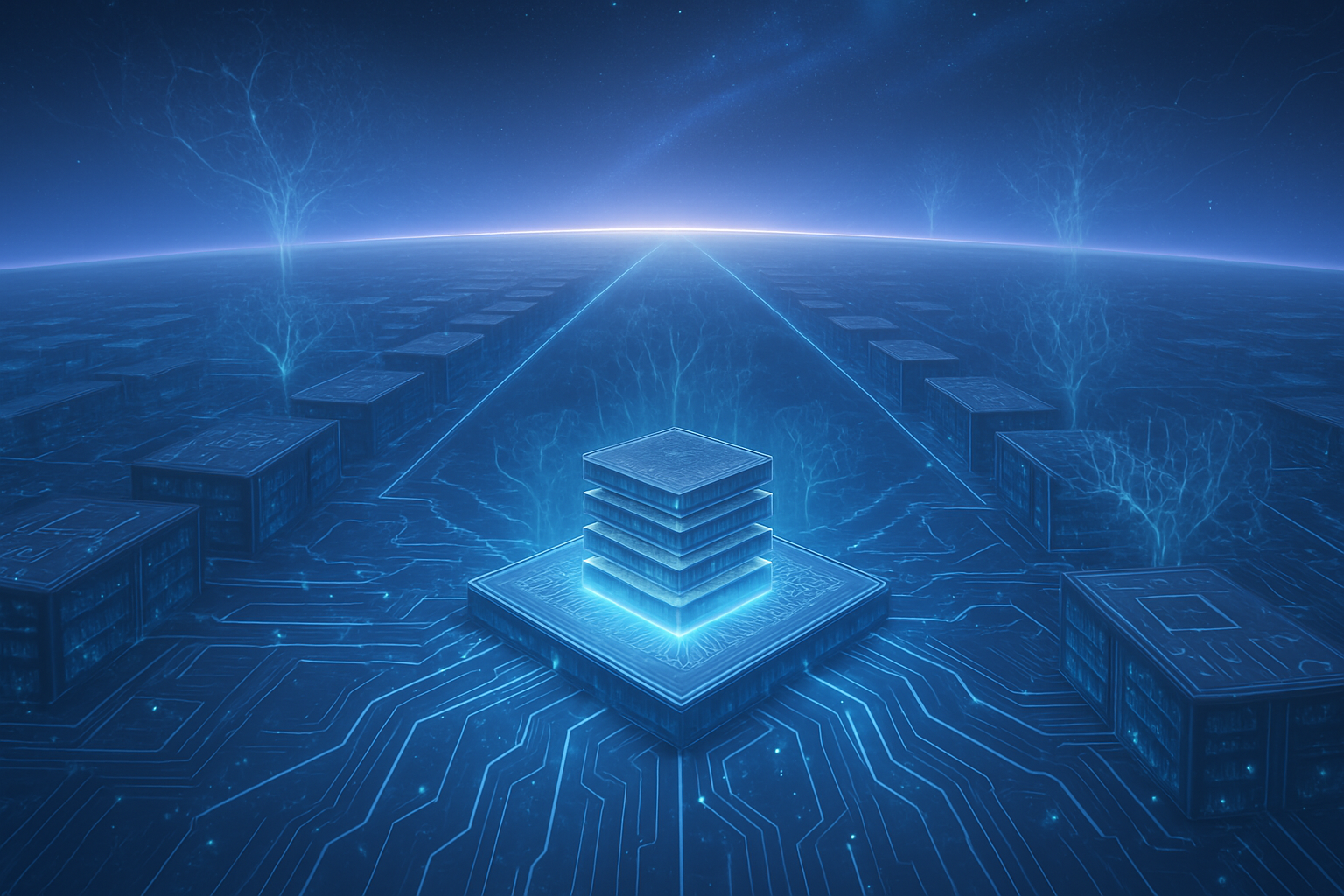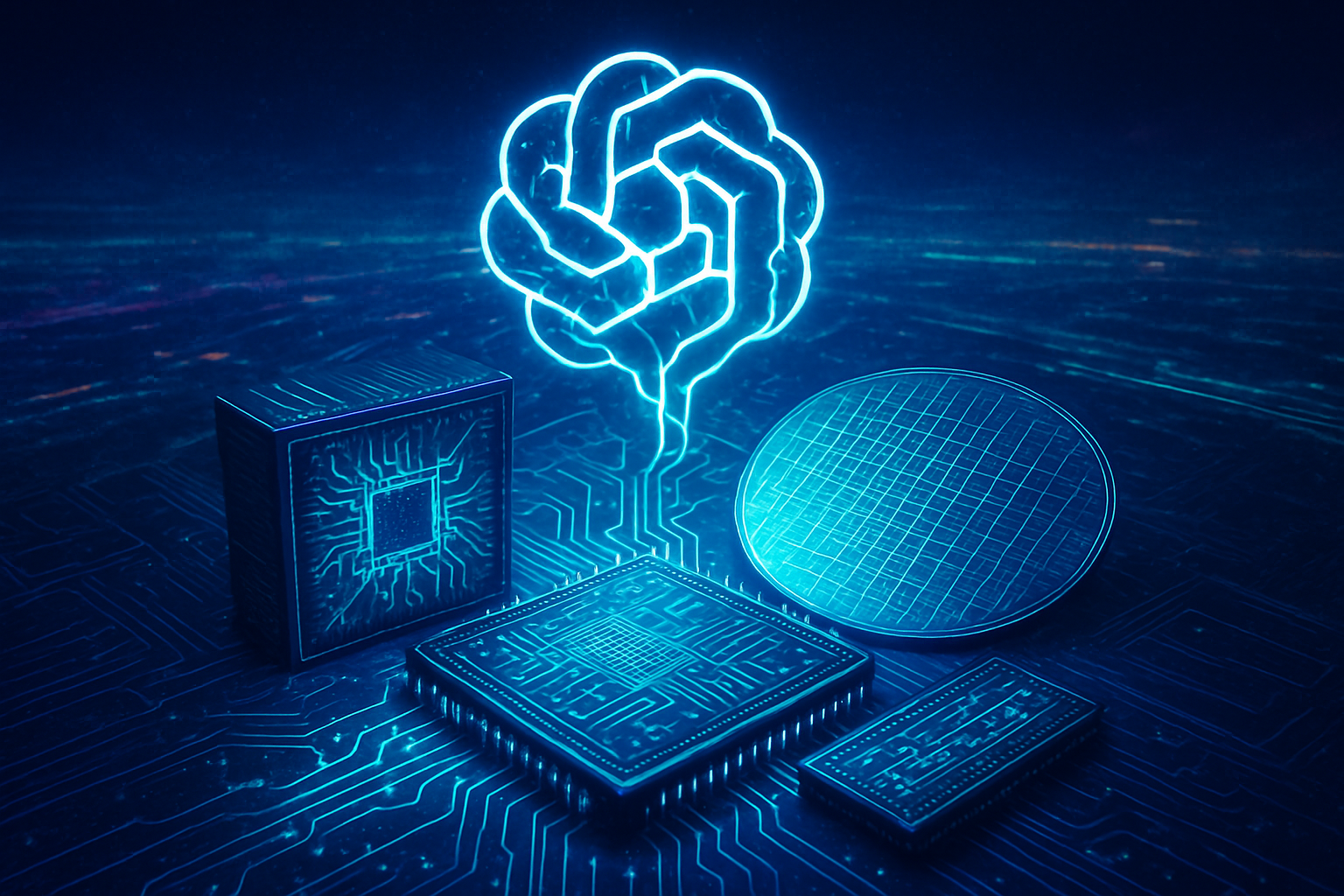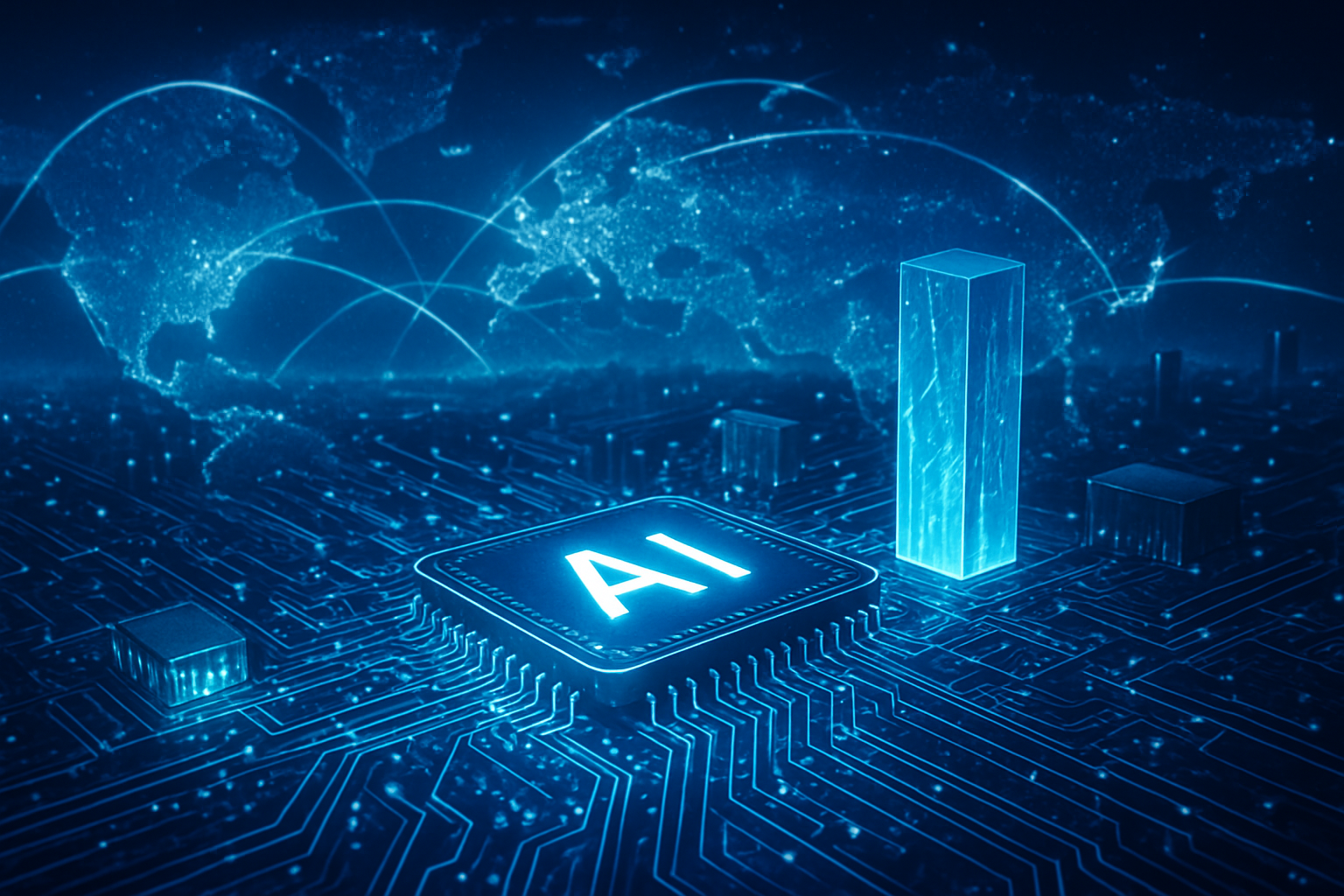Seoul, South Korea – October 2, 2025 – In a monumental stride towards realizing the next generation of artificial intelligence, OpenAI's audacious 'Stargate' project, a $500 billion initiative to construct unprecedented AI infrastructure, has officially secured critical backing from two of the world's semiconductor titans: Samsung Electronics (KRX: 005930) and SK Hynix (KRX: 000660). Formalized through letters of intent signed yesterday, October 1, 2025, with OpenAI CEO Sam Altman, these partnerships underscore the indispensable role of advanced semiconductors in the relentless pursuit of AI supremacy and mark a pivotal moment in the global AI race.
This collaboration is not merely a supply agreement; it represents a strategic alliance designed to overcome the most significant bottlenecks in advanced AI development – access to vast computational power and high-bandwidth memory. As OpenAI embarks on building a network of hyperscale data centers with an estimated capacity of 10 gigawatts, the expertise and cutting-edge chip production capabilities of Samsung and SK Hynix are set to be the bedrock upon which the future of AI is constructed, solidifying their position at the heart of the burgeoning AI economy.
The Technical Backbone: High-Bandwidth Memory and Hyperscale Infrastructure
OpenAI's 'Stargate' project is an ambitious, multi-year endeavor aimed at creating dedicated, hyperscale data centers exclusively for its advanced AI models. This infrastructure is projected to cost an staggering $500 billion over four years, with an immediate deployment of $100 billion, making it one of the largest infrastructure projects in history. The goal is to provide the sheer scale of computing power and data throughput necessary to train and operate AI models far more complex and capable than those existing today. The project, initially announced on January 21, 2025, has seen rapid progression, with OpenAI recently announcing five new data center sites on September 23, 2025, bringing planned capacity to nearly 7 gigawatts.
At the core of Stargate's technical requirements are advanced semiconductors, particularly High-Bandwidth Memory (HBM). Both Samsung and SK Hynix, commanding nearly 80% of the global HBM market, are poised to be primary suppliers of these crucial chips. HBM technology stacks multiple memory dies vertically on a base logic die, significantly increasing bandwidth and reducing power consumption compared to traditional DRAM. This is vital for AI accelerators that process massive datasets and complex neural networks, as data transfer speed often becomes the limiting factor. OpenAI's projected demand is immense, potentially reaching up to 900,000 DRAM wafers per month by 2029, a staggering figure that could account for approximately 40% of global DRAM output, encompassing both specialized HBM and commodity DDR5 memory.
Beyond memory supply, Samsung's involvement extends to critical infrastructure expertise. Samsung SDS Co. will lend its proficiency in data center design and operations, acting as OpenAI's enterprise service partner in South Korea. Furthermore, Samsung C&T Corp. and Samsung Heavy Industries Co. are exploring innovative solutions like floating offshore data centers, a novel approach to mitigate cooling costs and carbon emissions, demonstrating a commitment to sustainable yet powerful AI infrastructure. SK Telecom Co. (KRX: 017670), an SK Group mobile unit, will collaborate with OpenAI on a domestic data center initiative dubbed "Stargate Korea," further decentralizing and strengthening the global AI network. The initial reaction from the AI research community has been one of cautious optimism, recognizing the necessity of such colossal investments to push the boundaries of AI, while also prompting discussions around the implications of such concentrated power.
Reshaping the AI Landscape: Competitive Shifts and Strategic Advantages
This colossal investment and strategic partnership have profound implications for the competitive landscape of the AI industry. OpenAI, backed by SoftBank and Oracle (NYSE: ORCL) (which has a reported $300 billion partnership with OpenAI for 4.5 gigawatts of Stargate capacity starting in 2027), is making a clear move to secure its leadership position. By building its dedicated infrastructure and direct supply lines for critical components, OpenAI aims to reduce its reliance on existing cloud providers and chip manufacturers like NVIDIA (NASDAQ: NVDA), which currently dominate the AI hardware market. This could lead to greater control over its development roadmap, cost efficiencies, and potentially faster iteration cycles for its AI models.
For Samsung and SK Hynix, these agreements represent a massive, long-term revenue stream and a validation of their leadership in advanced memory technology. Their strategic positioning as indispensable suppliers for the leading edge of AI development provides a significant competitive advantage over other memory manufacturers. While NVIDIA remains a dominant force in AI accelerators, OpenAI's move towards custom AI accelerators, enabled by direct HBM supply, suggests a future where diverse hardware solutions could emerge, potentially opening doors for other chip designers like AMD (NASDAQ: AMD).
Major tech giants such as Google (NASDAQ: GOOGL), Microsoft (NASDAQ: MSFT), Meta (NASDAQ: META), and Amazon (NASDAQ: AMZN) are all heavily invested in their own AI infrastructure. OpenAI's Stargate project, however, sets a new benchmark for scale and ambition, potentially pressuring these companies to accelerate their own infrastructure investments to remain competitive. Startups in the AI space may find it even more challenging to compete for access to high-end computing resources, potentially leading to increased consolidation or a greater reliance on the major cloud providers for AI development. This could disrupt existing cloud service offerings by shifting a significant portion of AI-specific workloads to dedicated, custom-built environments.
The Wider Significance: A New Era of AI Infrastructure
The 'Stargate' project, fueled by the advanced semiconductors of Samsung and SK Hynix, signifies a critical inflection point in the broader AI landscape. It underscores the undeniable trend that the future of AI is not just about algorithms and data, but fundamentally about the underlying physical infrastructure that supports them. This massive investment highlights the escalating "arms race" in AI, where nations and corporations are vying for computational supremacy, viewing it as a strategic asset for economic growth and national security.
The project's scale also raises important discussions about global supply chains. The immense demand for HBM chips could strain existing manufacturing capacities, emphasizing the need for diversification and increased investment in semiconductor production worldwide. While the project is positioned to strengthen American leadership in AI, the involvement of South Korean companies like Samsung and SK Hynix, along with potential partnerships in regions like the UAE and Norway, showcases the inherently global nature of AI development and the interconnectedness of the tech industry.
Potential concerns surrounding such large-scale AI infrastructure include its enormous energy consumption, which could place significant demands on power grids and contribute to carbon emissions, despite explorations into sustainable solutions like floating data centers. The concentration of such immense computational power also sparks ethical debates around accessibility, control, and the potential for misuse of advanced AI. Compared to previous AI milestones like the development of GPT-3 or AlphaGo, which showcased algorithmic breakthroughs, Stargate represents a milestone in infrastructure – a foundational step that enables these algorithmic advancements to scale to unprecedented levels, pushing beyond current limitations.
Gazing into the Future: Expected Developments and Looming Challenges
Looking ahead, the 'Stargate' project is expected to accelerate the development of truly general-purpose AI and potentially even Artificial General Intelligence (AGI). The near-term will likely see continued rapid construction and deployment of data centers, with an initial facility now targeted for completion by the end of 2025. This will be followed by the ramp-up of HBM production from Samsung and SK Hynix to meet the immense demand, which is projected to continue until at least 2029. We can anticipate further announcements regarding the geographical distribution of Stargate facilities and potentially more partnerships for specialized components or energy solutions.
The long-term developments include the refinement of custom AI accelerators, optimized for OpenAI's specific workloads, potentially leading to greater efficiency and performance than off-the-shelf solutions. Potential applications and use cases on the horizon are vast, ranging from highly advanced scientific discovery and drug design to personalized education and sophisticated autonomous systems. With unprecedented computational power, AI models could achieve new levels of understanding, reasoning, and creativity.
However, significant challenges remain. Beyond the sheer financial investment, engineering hurdles related to cooling, power delivery, and network architecture at this scale are immense. Software optimization will be critical to efficiently utilize these vast resources. Experts predict a continued arms race in both hardware and software, with a focus on energy efficiency and novel computing paradigms. The regulatory landscape surrounding such powerful AI also needs to evolve, addressing concerns about safety, bias, and societal impact.
A New Dawn for AI Infrastructure: The Enduring Impact
The collaboration between OpenAI, Samsung, and SK Hynix on the 'Stargate' project marks a defining moment in AI history. It unequivocally establishes that the future of advanced AI is inextricably linked to the development of massive, dedicated, and highly specialized infrastructure. The key takeaways are clear: semiconductors, particularly HBM, are the new oil of the AI economy; strategic partnerships across the global tech ecosystem are paramount; and the scale of investment required to push AI boundaries is reaching unprecedented levels.
This development signifies a shift from purely algorithmic innovation to a holistic approach that integrates cutting-edge hardware, robust infrastructure, and advanced software. The long-term impact will likely be a dramatic acceleration in AI capabilities, leading to transformative applications across every sector. The competitive landscape will continue to evolve, with access to compute power becoming a primary differentiator.
In the coming weeks and months, all eyes will be on the progress of Stargate's initial data center deployments, the specifics of HBM supply, and any further strategic alliances. This project is not just about building data centers; it's about laying the physical foundation for the next chapter of artificial intelligence, a chapter that promises to redefine human-computer interaction and reshape our world.
This content is intended for informational purposes only and represents analysis of current AI developments.
TokenRing AI delivers enterprise-grade solutions for multi-agent AI workflow orchestration, AI-powered development tools, and seamless remote collaboration platforms. For more information, visit https://www.tokenring.ai/.


